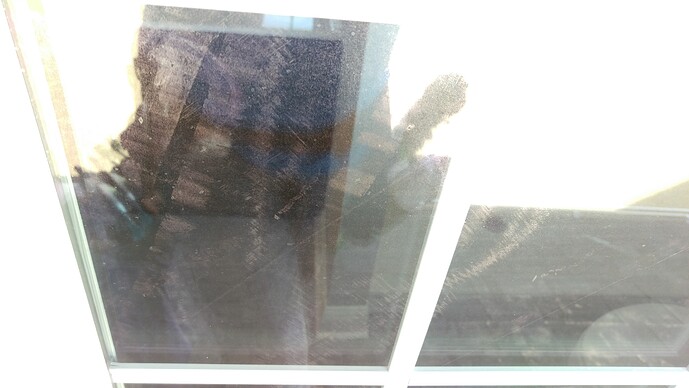How do I determine if there’s a coating on a window? I know that some coatings must be labeled but you know how gov regs are, if that label wasn’t required when it came out then there’s no marking.
Generally, if it’s just a plain Jane piece of clear glass it’s probobly not coated. Unfortunately those tend to be pre 1990’s era glass in my experience. Just about everything made today seems to be coated. I could be wrong.
Here is a link to get you started on your journey to understanding window coatings and the proper process to clean them, the are many great threads in this topic in the archives here.
If it isn’t labeled, you’ll know as soon as your put your mop on it. Low-E coatings are always between panes here unless there is a manufacturers defect. I have seen plenty of new CCU where the installer installed painfully obvious defective glass that had Low E on an outside pane.
Here is what Low E on the wrong side typically looks like. You can tell the pane that is defective just by looking at it. It is purple, lol. Your mop will feel funny on it. You will just know.
Here is another Low E outside. This is before I even touched it. We let the builder know and left it as is with just a squeegee and no scrubbing.
That first picture makes me think 1 of my pest customers has a few that are backwards, some had a purple hue on it and some of the others didn’t. My guess is that most windows today are low e, it just depends if they’re installed correctly
As for the low e damage I took some pics of a few windows I’ve come across, I think the first 1 is just moisture inside:
You do sometimes get low-e coatings on the outer face of the glazing units on purpose (not any of those in the photos above tho - they look like mistakes!). They make the outer pane warmer when the air is still, and so prevent condensation occurring on the outside of the glass. “SGG ViewClear” is one type and “Pilkington Anti-Condensation” is another.
They’re a tough type of “hard” low-e coating, Pilkington say “Steel wool, razor blades, abrasive cleaners, hydrofluoric acid, fluorine compounds or strong alkalis should never be used on the coated surface of Pilkington Anti-condensation Glass.”




